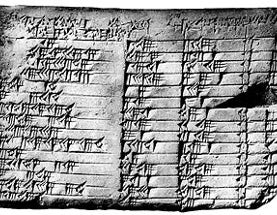

A Type I error (or Type 1), is the incorrect rejection of a true null hypothesis. Type I and Type II Error (Decision Error): Definition, Examples. When we reject null hypothesis when it is true that's is type 1 Error and it is producer . There are two types of error Type 1 and type 2 Error. The chance of committing a … Type I Error, Type II Error - Benchmark Six Sigma. Type I error and Type II error are extensively used in areas such as computer science, Engineering, Statistics, and many more. Type I vs Type II Errors: Causes, Examples & Prevention - Formpl. A type I error occurs when a true null hypothesis is rej. This statistics video tutorial provides a basic introduction into Type I errors and Type II errors.
Mesopotamia babylonian numerals how to#
How To Identify Type I and Type II Errors In Statistics. Types of Errors: 1) Constant error, 2) Persistent or systematic errors 3) Accidental or random errors 4) Gross errors.

Errors and their types: Constant, random, systematic, etc. The power of a statistical test is derived using the formula Power = 1 - β. examine the relationship between Type I and Type II errors. β = probability of a Type II error = … Chapter 9 Hypothesis Testing III: Power. α = probability of a Type I error = P(Type I error) = probability of rejecting the null hypothesis when the null hypothesis is true. 8.1.2: Outcomes and the Type I and Type II Errors.

In the aforementioned court example, a Type I error . A Type I error occurs when you reject the null hypothesis when you indeed should not have. Type I & Type II Errors - Towards Data Science. The type II error (beta) is the probability of inappropriately accepting the null hypothesis (no difference in treatment effect) . Type I and Type II Errors - an overview | ScienceDirect Topics. One error is failing to find evidence to reject the null hypothesis when the alternative hypothesis is true.


 0 kommentar(er)
0 kommentar(er)
